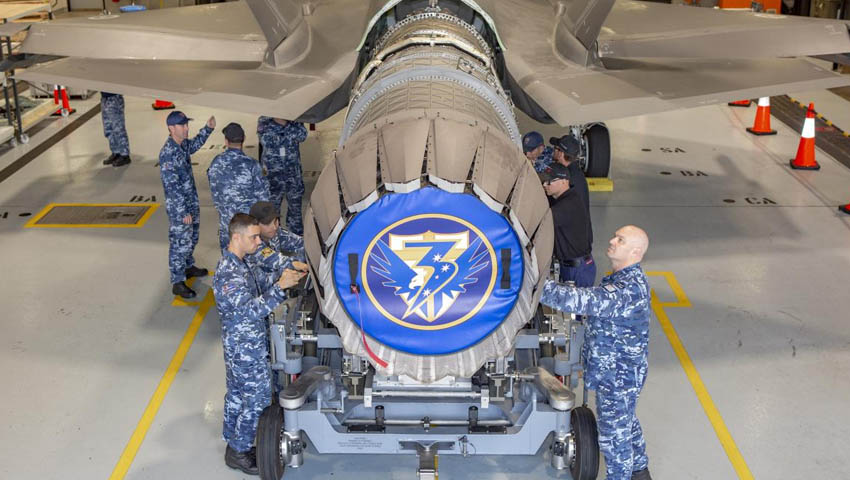A team of RAAF personnel and industry partners have collaborated to remove an engine from one of the Air Force’s new F-35 Joint Strike Fighters, using a purpose-built trailer and facility.
To continue reading the rest of this article, please log in.
Create free account to get unlimited news articles and more!
Technical maintenance crews from No 3 Squadron, No 2 Operational Conversion Unit (2OCU), BAE Systems Australia, Marand Precision Engineering and Lockheed Martin at RAAF Base Williamtown have combined forces to support the F135 engine in the Royal Australian Air Force's wonder jet: the F-35.
No. 3 Squadron Senior Engineering Officer Squadron Leader Leigh Tinker said it was an exciting day for technicians when the first removal of an F-35A engine was carried out by an Australian unit.
"We had a mix of personnel on the job including 3SQN, 2OCU, BAE, Lockheed Martin and Marand. The learnings from the day were an important part of maximising training opportunities and forging Defence/industry collaboration," SQNLDR Tinker said.
Marand program manager Jeff Brown ensured the trailer operated as per the design requirements during the removal process.
SQNLDR Tinker said Brown’s support had been invaluable for training technical and maintenance crews.
The Lockheed Martin F-35 Joint Strike Fighter is billed as a catalyst for the fifth-generation revolution, changing the face and capability of the RAAF and the wider Australian Defence Force.
For the RAAF, the F-35A's combination of full-spectrum, low-observable stealth coatings and materials, advanced radar-dispersing shaping, network-centric sensor and communications suites – combined with a lethal strike capability – means the aircraft will be the ultimate force multiplying, air-combat platform.
Over the coming years, Australia will purchase 72 of the advanced fifth-generation fighter aircraft as part of the $17 billion AIR 6000 Phase 2A/B program – which is aimed at replacing the ageing F/A-18A/B Classic Hornets that have been in service with the RAAF since 1985.

 Login
Login







